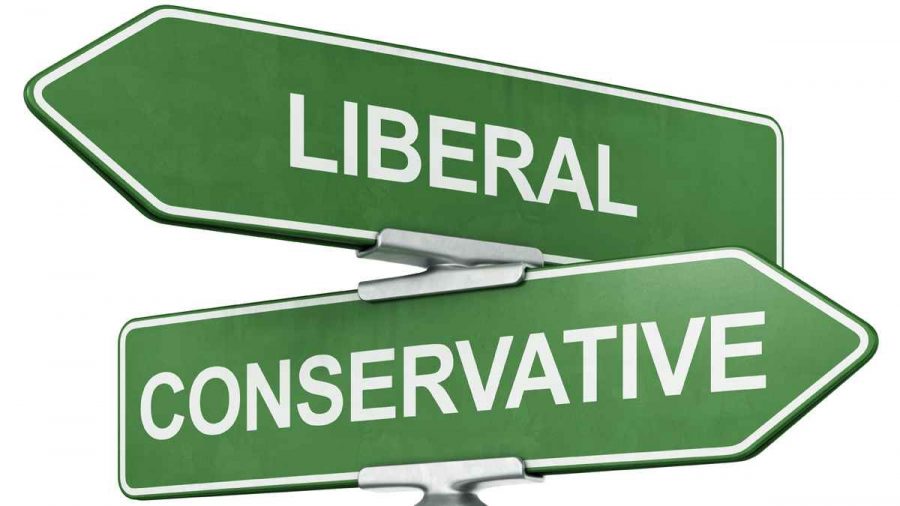Conservative vs. Liberal
Where Do You Stand?
October 8, 2019
Knowing how to apply one’s beliefs to politics and different political stances can be difficult, especially when one does not know the difference between major parties and what their majority beliefs are. While an individual may “belong” to one party they are not limited to developing or borrowing other beliefs and opinions. The two main opposing ideologies are Conservatism and Liberalism. The common impression of these two ideas is that they are often in conflict with each other’s judgment, and that one agrees with the beliefs of Republicans (Conservatism) and the other Democrats (Liberalism). But what do these parties believe in and how are they influenced?
Many factors go into how an individual identifies their political attitude, most compelling of which being areas with prominent influence. One of these areas includes family. Children’s political opinions tend to be heavily shaped by important authority figures in their lives, including parents. Although throughout their life other political aspects may incorporate and alter these views, they remain and reside with what these figures taught them from a young age. But what are the real differences?
Conservatives’ predominant conviction is that individual empowerment is how to solve problems. Meaning that conflicts in society should be worked out through personal development by individuals rather than the government. The ideal government for a Conservative is one that provides the necessary freedom to pursue one’s goals. A Conservative trusts in a free market economy- an economic system based on supply and demand with limited government intervention to create economic well being. Conservatives hold to traditional American values, such as individual freedom, self-reliance, equality of opportunity and competition, and opportunity for a better life through hard work aka “The American Dream.” This political concept implicates the importance of individual liberty, meaning one’s personal freedom outside the government’s control- such as the right to bear arms.
The prevailing liberal view is that the main concern of politics should be conserving and improving individual freedom. Liberals want to rely on the government to achieve equal opportunity and equality for society. In a Liberal’s eyes, the government’s duty should be to reduce social issues, protect civil liberties and individual/human rights, and guarantee no one is in need. While Conservatives promote the freedom of solving independent problems without governmental interference, Liberals call for the government to solve the peoples’ problems for them. The expectations they have for the government are ambitious, suggesting that the government remove obstacles, such as poverty, disease, discrimination, and ignorance, that prevent the individual from living freely and/or understanding their full potential. They are primarily concerned with the roles of the government. Liberals want government aid for the needy through regulating working conditions to promote workers’ health and well-being. In their mindset, the poor and defenseless members of society only become truly free through public support.
Even after understanding the main opposing political beliefs, one can still be conflicted about where they stand. It comes down to personal character and what is important to the individual. If there are aspects of both parties that pertain to one’s political opinions then maybe they do not identify with either solely. But, when it comes down to voting for one or the other, certain political issues have to be taken into account and the individual must decide which leader will best represent their attitude towards the subject.
Whether a Liberal, a Conservative or maybe even neither, all viewpoints help shape politics and the active debates in society. Individuals must be involved with these politics to contribute to a participating civic population.

